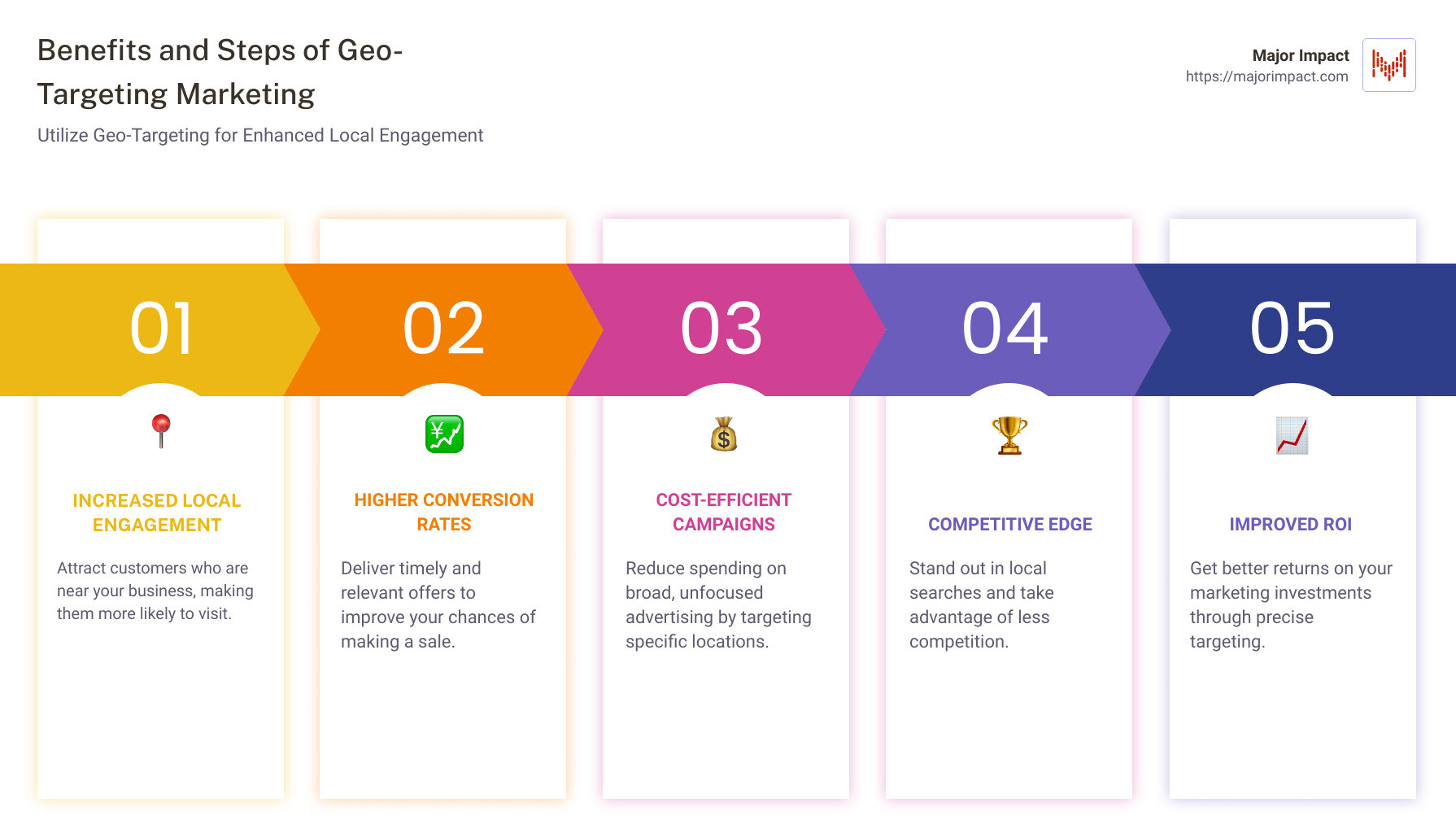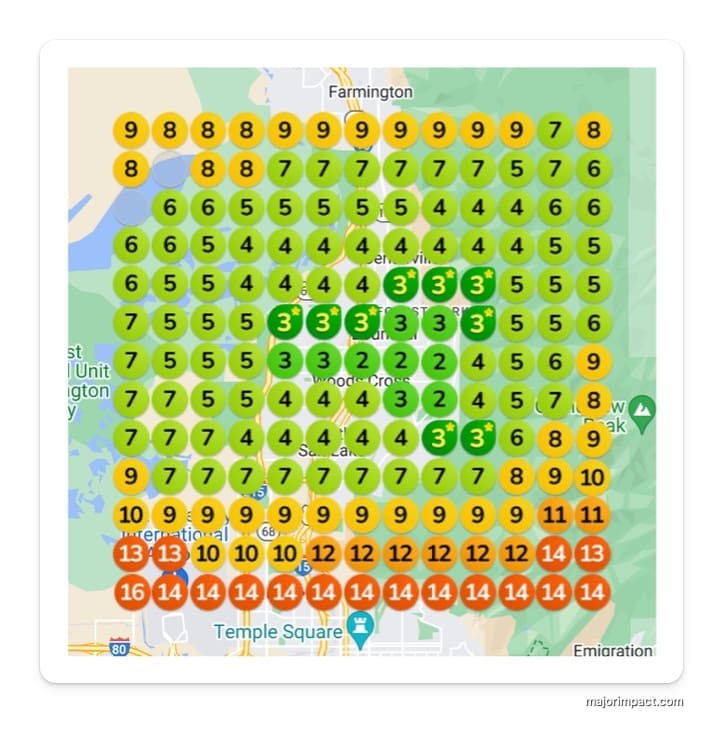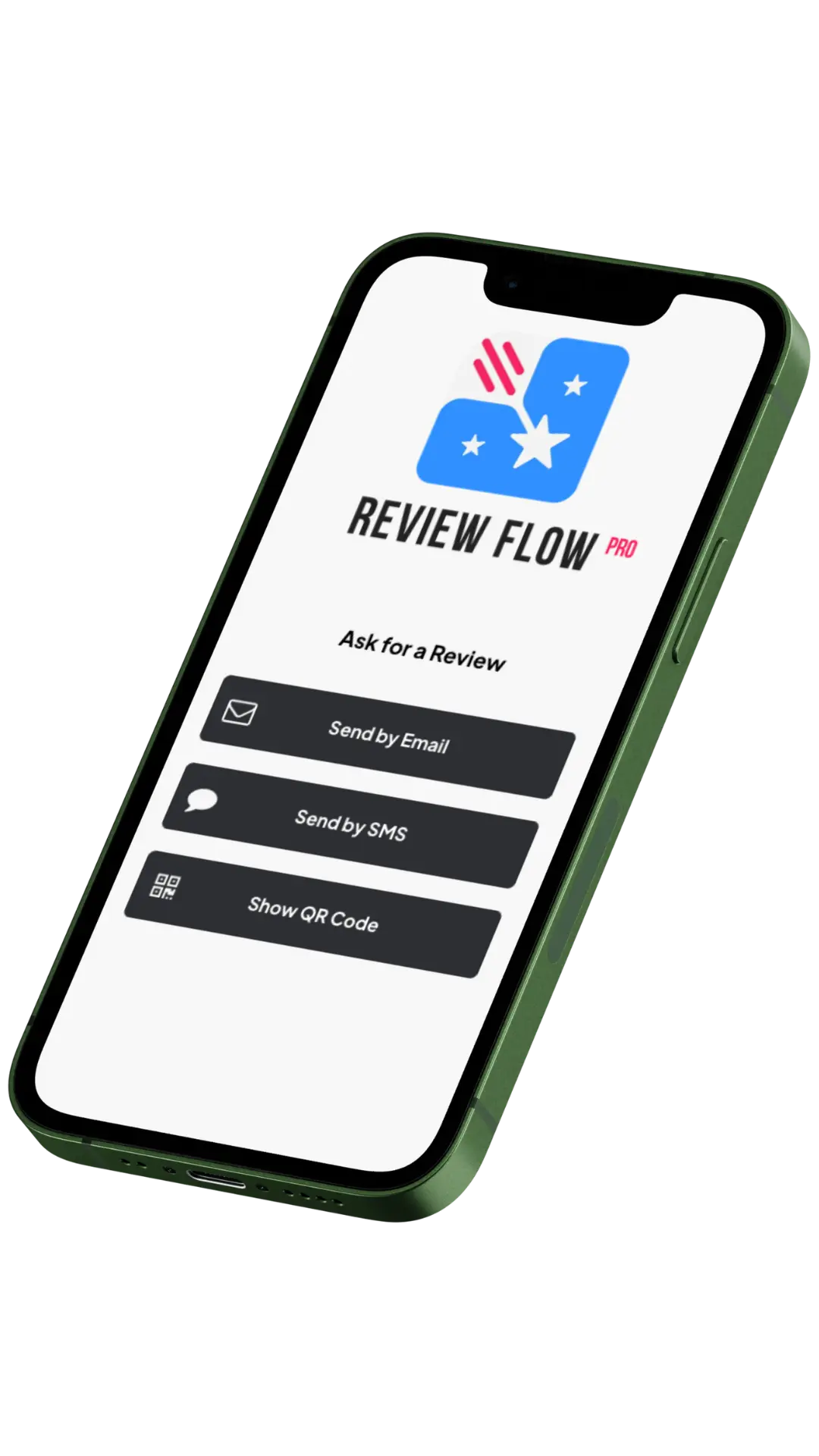Table of Contents
Introduction
How can a service business use geo targeting marketing to grow? This powerful strategy helps businesses attract local customers and boost sales. It enhances relevance by utilizing a customer’s location for personalized ads.
Here’s a quick answer:
- Increased Local Engagement: Attract customers near your business.
- Higher Conversion Rates: Deliver relevant, timely offers.
- Cost-Efficient Campaigns: Spend less on broad, unfocused advertising.
- Competitive Edge: Stand out in local searches.
In simple words, geotargeting means showing ads based on someone’s location. Think about getting a lunch ad while at work, or a special offer when you’re near a certain store. Businesses, especially service ones, can direct their ads to people nearby, making them more effective and cheaper.
My name is Elliott Kosmicki, and I’ve been in the digital marketing world for over 20 years. I’ve seen geotargeting transform businesses, making marketing more precise and rewarding. Stay tuned to learn how you can harness this tool to outperform competitors.
What is Geo-Targeting Marketing?
Geo-targeting marketing is a strategy that uses location-based data to deliver personalized ads to potential customers. This means businesses can show ads to people based on where they are or where they’ve been. It’s like sending a special message to someone right when they’re most likely to need it.
How It Works
Geo-targeting relies on several technologies to gather location data:
- GPS Signals: Many mobile devices have GPS, which provides precise location details. When users enable location services, marketers can send targeted ads based on their exact position.
- IP Addresses: Every device connected to the internet has an IP address. This can give a general idea of a user’s location, such as their city or neighborhood. It’s not as precise as GPS but still useful for targeting ads.
- Cellular Data: Mobile networks can track the location of a device based on the cell towers it connects to. This method is less accurate than GPS but can still provide a reasonable estimate of a user’s location.
- Wi-Fi: When a device connects to a Wi-Fi network, it can also provide location data. This is especially useful indoors where GPS signals might be weak.
Why It Matters
Using location data allows businesses to create personalized ads that are more relevant to the user. For example, a cafe can send a discount offer to people who are nearby during lunchtime. This increases the chances that the ad will be acted upon, leading to higher engagement and sales.
Real-World Impact
Consider Whole Foods. They used geo-targeting to send special offers to shoppers near competitor stores. This clever tactic not only attracted new customers but also took business away from competitors.
Another example is Urban Outfitters, which used a technique called “send-time optimization.” They identified when past customers were near their stores and sent them personalized messages. This strategy led to a more than 100% improvement in customer re-engagement.
The Benefits
Geo-targeting marketing offers several key benefits:
- Increased Relevance: Ads are shown to people who are most likely to be interested based on their location.
- Cost-Effective: By targeting a specific audience, businesses can reduce wasted ad spend.
- Enhanced User Experience: Customers receive ads that are timely and relevant, making them more likely to respond positively.
By integrating these technologies, businesses can create a seamless experience that bridges the gap between digital and physical interactions. This is especially valuable for service businesses that rely on local customers.
Next, let’s dive into how a service business can use geo-targeting marketing to boost its reach and effectiveness.
How Can a Service Business Use Geo-Targeting Marketing?
Benefits of Geo-Targeting for Service Businesses
Targeted Ads: Geo-targeting allows service businesses to show ads to potential customers based on their location. This means you can promote your services to people who are more likely to need them. For example, a plumber can target ads to people within a 10-mile radius who might need emergency services.
Local Promotions: By focusing on a specific area, you can tailor your promotions to local events or seasons. For instance, a salon can offer discounts during local festivals or holidays, attracting more customers when they are most likely to be interested.
Customer Engagement: Personalized messaging based on location increases engagement. People are more likely to respond to ads that feel relevant to their immediate needs. For example, GasBuddy sends real-time offers when users enter a geofenced area, leading to higher engagement rates.
Increased Foot Traffic: When you target ads to people near your physical location, you can drive more foot traffic. Ulta Beauty used geo-targeting to attract customers near competitor stores, resulting in faster achievement of visitation targets.
Improved ROI: Geo-targeting ensures that your marketing budget is spent efficiently by focusing on the right audience. This leads to higher conversion rates and a better return on investment. Toyota’s campaign, for example, resulted in significant visits to specific dealerships.
Personalization: Geo-targeting allows for highly personalized marketing efforts. The Sacramento Kings, for instance, use location-based notifications to enhance the game-day experience for attendees, resulting in a 41% indirect open rate.
Reduced Acquisition Costs: By targeting only those who are most likely to convert, you can lower your customer acquisition costs. William Hill achieved 400% greater engagement with location-targeted messages compared to non-targeted ones.
Accurate Targeting: Geo-targeting uses precise data to ensure your ads reach the right people. This accuracy helps you avoid wasted ad spend and reach customers who are more likely to be interested in your services.
Enhanced User Experience (UX): Customers receive ads that are relevant to their location and needs, making their experience more enjoyable. This can lead to higher satisfaction and loyalty.
Competitive Advantage: By using geo-targeting, you can outmaneuver competitors who are not leveraging this technology. For example, businesses can set up geofences around competitors to attract their customers with better offers.
Steps to Implement Geo-Targeting
Determine Location: First, identify the geographical areas where your potential customers are located. Use data from your existing customer base or research to find out where there is a high demand for your services.
Research Audience: Understand the demographics and psychographics of your target audience in these locations. What are their interests, behaviors, and needs? This will help you create more relevant and effective ads.
Create Relevant Content: Develop ads and promotions that speak directly to the needs and interests of your local audience. Use local language, cultural references, and relevant offers to make your ads more appealing.
Use Appropriate Tools: Leverage tools and platforms that support geo-targeting. Companies like GroundTruth and Airship offer advanced geo-targeting capabilities that can help you create effective campaigns. For instance, GroundTruth’s location insights helped Ulta Beauty outperform other stores by reaching their weekly visitation targets 43% faster.
By following these steps, service businesses can effectively use geo-targeting to attract more local customers, improve engagement, and achieve a higher return on investment.
Next, let’s explore the differences between geo-targeting and geofencing to understand how each can be used in your marketing strategy.
Geo-Targeting vs. Geofencing
When it comes to location-based marketing, geo-targeting and geofencing are two powerful tools. While they sound similar, they serve different purposes and offer unique benefits.
Geographic Boundary
Geofencing involves creating a virtual “fence” around a specific geographic area. Think of it as drawing a circle on a map. When users enter this area, they receive targeted ads or notifications. For example, Whole Foods used geofencing to send deals to shoppers near competitor stores, enticing them to switch.
Geo-targeting, on the other hand, goes beyond just the location. It uses various data points like behavior and demographics to deliver more personalized ads. For instance, a retailer could target female app users near their store who have previously purchased women’s shoes. This makes the advertising more relevant and engaging.
Behavior Data
Behavior data plays a crucial role in geo-targeting. By analyzing users’ past actions, businesses can predict what they might be interested in next. For example, if a customer often orders lattes through an app, a coffee shop could send them a discount coupon when they are nearby.
Geofencing doesn’t typically use behavior data. It only focuses on the user’s location. This makes it simpler but less personalized.
Demographic Data
Geo-targeting also leverages demographic data, such as age, gender, and income level. This allows businesses to create highly targeted campaigns. For example, a gym might target young professionals living in a specific area who are interested in fitness.
Geofencing does not use demographic data. It simply sends messages to anyone who enters the geofenced area, regardless of their personal characteristics.
Push Notifications
Both geo-targeting and geofencing can send push notifications. However, the content of these notifications can be different.
With geofencing, the notifications are usually generic and sent to all users within the geofence. For example, Denny’s used geofencing to send “Build Your Own Skillet” offers to motorists near their locations, increasing in-store visits by 12%.
With geo-targeting, the notifications are more personalized. They take into account behavior and demographic data to make the message more relevant. This results in higher engagement rates. For instance, William Hill uses location-based push notifications to send targeted offers, achieving 400% greater engagement than non-targeted messages.
Proximity Marketing
Proximity marketing is another term often associated with these technologies. It refers to marketing efforts that target users based on their proximity to a specific location. Both geo-targeting and geofencing fall under this umbrella.
- Geofencing is useful for simple proximity marketing campaigns where the goal is to attract anyone near a specific location.
- Geo-targeting is better for more sophisticated campaigns where the goal is to attract a specific type of customer based on multiple data points.
By understanding the differences between geo-targeting and geofencing, service businesses can choose the right approach for their marketing strategy.
Next, we’ll look at the tools and technologies that support these location-based marketing efforts.
Tools and Technologies for Geo-Targeting
Geo-targeting marketing relies on various tools and technologies to reach potential customers based on their location. Let’s explore some of the key technologies that enable effective geo-targeting.
GPS
Global Positioning System (GPS) is the backbone of geo-targeting. GPS uses satellites to determine the precise location of a mobile device. This technology allows marketers to send highly targeted ads based on a user’s real-time location. For example, a local coffee shop can send a discount offer to someone walking nearby.
IP Spidering
IP Spidering involves identifying the geographic location of a user based on their IP address. This method is less precise than GPS but useful for broader location-based marketing. For instance, a service business can use IP spidering to target ads to users in a specific city or region.
Geofencing
Geofencing creates virtual boundaries around a specific location. When a mobile device enters this boundary, it triggers a pre-set action, like sending a push notification or an SMS. For example, Whole Foods used geofencing to send special offers to shoppers near their competitors’ stores, encouraging them to switch and shop at Whole Foods instead.
Mobile Apps
Mobile Apps are powerful tools for geo-targeting. Apps can gather location data (with user consent) and deliver personalized content. For example, the Sacramento Kings use their app to send personalized game-day notifications to fans as they approach the arena, enhancing the overall experience.
GroundTruth
GroundTruth is a platform that provides location-based marketing solutions. It uses real-world data to target users based on their location and behavior. GroundTruth’s weather targeting feature allows businesses to tailor ads to current weather conditions, making promotions more relevant. For example, a store can advertise umbrellas when it’s raining.
Airship
Airship offers mobile engagement solutions, including location-based notifications. It helps businesses send personalized messages to users based on their proximity to beacons. For instance, William Hill uses Airship to send location-based push notifications, achieving 400% greater engagement than non-targeted messages.
Gimbal
Gimbal provides location intelligence and geo-targeting solutions. It integrates with mobile apps to deliver personalized recommendations and alerts based on user location. During the SXSW conference, Gimbal’s technology was used to send over 415,000 location-triggered notifications, enhancing attendee engagement.
These tools and technologies enable service businesses to create highly targeted and effective marketing campaigns. By leveraging GPS, IP spidering, geofencing, and specialized platforms like GroundTruth, Airship, and Gimbal, businesses can reach the right customers at the right time and place.
Next, let’s look at some real-world examples of geo-targeting in service businesses.
Real-World Examples of Geo-Targeting in Service Businesses
Urban Outfitters
Urban Outfitters has been a leader in digital marketing innovation. They use a sophisticated geo-targeting technique called “send-time optimization.” This technology identifies when past customers are near a store and most likely to engage with the brand. The result? A more than 100% improvement in customer re-engagement across all messaging channels.
Whole Foods
Whole Foods leveraged geofencing to attract shoppers from nearby competitors. By offering better deals, they successfully enticed customers to make last-minute switches to their stores. This tactic not only increased foot traffic but also boosted sales.
Denny’s
Back in 2014, Denny’s was an early adopter of geo-targeting. Their “Build Your Own Skillet” campaign used location data to target hungry motorists, resulting in a 12% increase in in-store visits. This shows the power of combining location data with targeted offers.
Bonobos
Bonobos, an online men’s apparel store, opened pop-up shops and used geo-targeting to advertise within a small radius. By doing so, they drove traffic to these temporary stores, which later translated into online sales. This approach allowed them to connect with customers in a tangible way.
Match.com
Match.com employs geo-targeting to help people connect in the real world. Their app sends notifications to users about potential romantic matches nearby. This feature encourages spontaneous meet-ups, making online dating more dynamic and engaging.
Sacramento Kings
The Sacramento Kings use geo-targeting to enhance the game-day experience. When fans approach Golden 1 Center, personalized notifications greet them on their lock screens. By using beacons and real-time data, the Kings provide a unique and engaging experience, leading to a 41% indirect open rate.
SXSW
During the SXSW conference, geo-targeting was used to connect attendees with personalized recommendations and alerts. With over 415,000 location-triggered notifications sent, attendees could easily navigate the event and stay engaged with the content.
William Hill
William Hill, a sports betting outlet, uses location-based push notifications to send targeted offers. These messages achieve 400% greater engagement than non-targeted ones. This strategy ensures that every message is relevant, increasing user satisfaction and engagement.
GasBuddy
GasBuddy helps users find the best gas prices and offers rewards through geo-targeting. When users enter a geofenced area, they receive push notifications for limited-time offers. This approach drives user engagement and loyalty.
These real-world examples demonstrate how service businesses can effectively use geo-targeting to enhance customer engagement, drive traffic, and boost sales. By leveraging location-based technologies, businesses can create highly personalized and timely marketing campaigns.
Next, let’s answer some frequently asked questions about geo-targeting marketing.
Frequently Asked Questions about Geo-Targeting Marketing
What are the three types of geo-targeting?
Geo-targeting can be broken down into three main types:
- Countries: This is the broadest form of geo-targeting. It involves targeting users based on their country. For example, an international company might run different ads in the U.S. and Canada to cater to each market’s preferences.
- Areas within countries: This type focuses on specific regions, states, or cities within a country. For instance, a local plumbing service in New York City might target ads only to users within the city limits or even specific neighborhoods.
- Location radius: This is the most precise form of geo-targeting. It involves targeting users within a specific distance from a location. For example, a coffee shop might target ads to users within a 1-mile radius of their store to attract nearby customers.
How does geo-targeting work?
Geo-targeting relies on various types of location data to deliver personalized ads:
- GPS: Global Positioning System data provides precise location information. This is often used in mobile marketing to target users based on their real-time location.
- IP address: Internet Protocol addresses can give a general idea of a user’s location, such as their city or region. This is commonly used for desktop users.
- Device ID: Unique identifiers for mobile devices can be used to track and target users based on their location history and behavior.
- Beacons: These are small devices that use Bluetooth to send signals to nearby smartphones. When users are close to a beacon, they can receive targeted messages or notifications.
What is the difference between geo-targeting and geofencing?
Geo-targeting and geofencing are both location-based marketing strategies but differ in their approach and precision:
- Geo-targeting uses a combination of geographic boundaries, behavior data, and demographic data to deliver personalized ads to a specific audience. For example, a restaurant might target ads to people who have previously searched for dining options and are currently near their location.
- Geofencing involves creating a virtual geographic boundary around a specific area. When a user enters or exits this area, they receive a push notification or other targeted marketing action. For instance, a retail store might set up a geofence around their location to send special offers to users who come within a certain distance.
By understanding these concepts, service businesses can effectively use geo-targeting and geofencing to increase engagement and improve ROI.
Next, let’s explore the tools and technologies that can help you implement geo-targeting in your marketing strategy.
Conclusion
Geo-targeting marketing can be a game-changer for service businesses. By leveraging location-based data, you can deliver personalized marketing that speaks directly to your customers’ needs and preferences. This not only makes your marketing more relevant but also significantly increases engagement.
Personalized Marketing
Using geo-targeting, you can tailor your offers and messages based on where your customers are. For example, Whole Foods used geofencing to offer shoppers near its competitors better deals if they switched stores. This kind of personalized marketing can make your business stand out and attract more customers.
Increased Engagement
Personalized notifications can significantly boost engagement. The Sacramento Kings used location-based notifications to enhance the game-day experience for their fans, resulting in a 41% indirect open rate. Imagine what similar strategies could do for your business.
Improved ROI
When your ads reach the right people at the right time, your return on investment (ROI) improves. William Hill‘s location-targeted messages achieved 400% greater engagement than non-targeted messages. This kind of precision ensures that your marketing budget is spent wisely, delivering better results.
By incorporating geo-targeting into your marketing strategy, you can not only increase engagement but also see a significant improvement in ROI.








